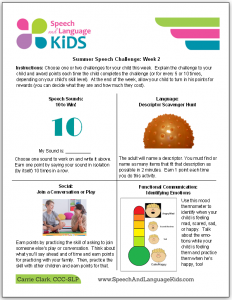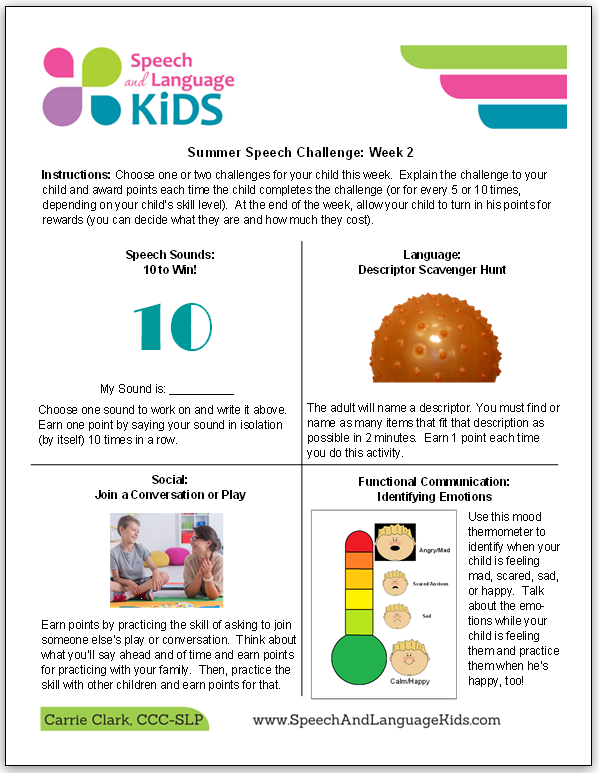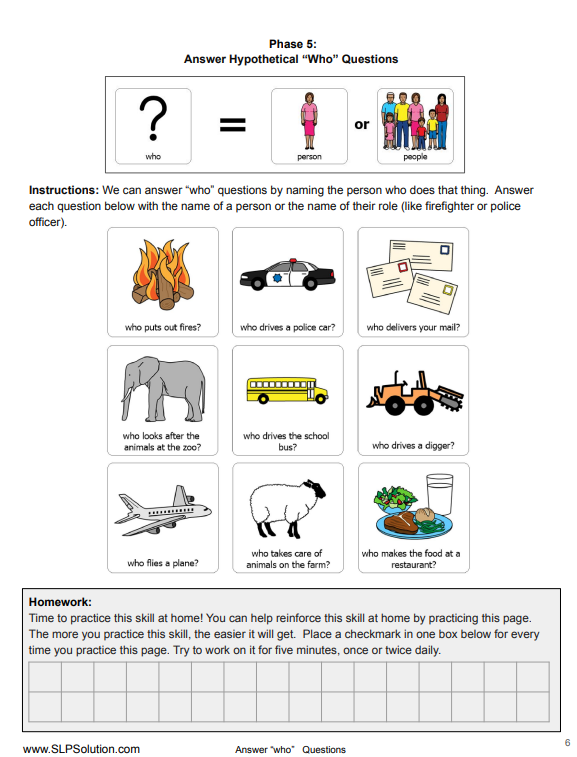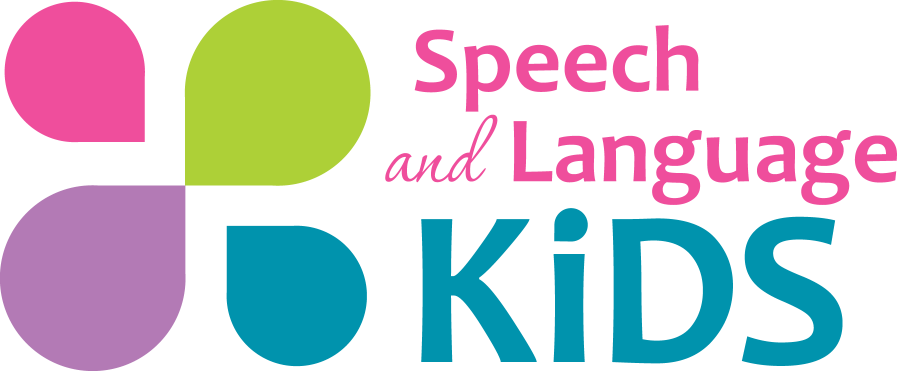Summer Speech Therapy Homework – Week 2
Welcome to week two of our Summer Speech Challenge for Parents! Click here if you want to go back and start from week 1!
Summer Speech Therapy Homework Challenge:
To recap, our Summer Speech Challenge is a new challenge for your child each week of this summer. These are simple activities that are meant for you to be able to work into your daily routines. There are four different challenges each week so you can pick which one is best for your child. If you feel like your child struggled with last week’s and you’d like to try it for another week, go for it! Or, you can push ahead and do this week’s activity anyway. Sometimes our children do better if we switch to something else.
Avoid the Battle:
I want to make a quick note here that nothing we’re doing here should be a battle! If your child is struggling to do the skill that you’ve selected, try to either make it easier or switch to something else. The reason that we speech-language pathologists go to school for 5+ years is so that we can know exactly how to tweak things when the child isn’t getting it. So don’t feel bad if it’s just not clicking for you and your child! Switch to something a little easier to keep the momentum going to and check in with your child’s speech-language pathologist. This shouldn’t replace the advice of a licensed speech-language pathologist!
Choose an Area:
You’ll want to pick one or two challenges for your child to work on this week. Here’s a quick breakdown of the 4 areas that are included in our summer challenge so you can pick which skills your child needs.
- Speech Sounds: Choose this area if your child is struggling to say a sound correctly in conversation. You’ll only choose one sound to work on at a time so don’t go crazy! You can always come back and repeat this process with another sound later.
- Language: Choose this area if your child struggles with any parts of language. This can include anything from using full, grammatically-correct sentences to knowing the names for different vocabulary words. If it has to do with putting together sentences and getting your ideas across using words, then language is your area.
- Social Skills: Choose this area if your child needs help with interacting appropriately with others. We’ll practice a variety of interaction skills with this area.
- Functional Communication: Choose this area if your child is just beginning to talk or is only saying 1-2 words at a time. This area will focus on basic communication skills for our non-verbal children and new talkers.
Challenge Week 2:
Let’s get started with this week’s challenge!
Instructions:
- Choose one (or max two) areas below that your child needs to work on
- Print out the visuals for the challenges and cut out the ones your child needs
- Post the visuals somewhere that you and your child will see it frequently
- Read the challenge rules and explain it to your child in language she will understand
- Award points as your child completes the challenge throughout the week (view week 1 for ideas for this)
- Allow your child to redeem points as you see fit
Week 2 Picture Download:

Click Here to Download the PDF
The Challenges:
Speech Sounds: 10 to Win
For the speech summer challenges, you’ll want to choose one sound to work on. It gets complicated when you start adding in multiple sounds so just choose one that your child needs to work on. It can be one he’s already been working on in speech or an entirely new one.
This week, the goal is to have your child say the target sound in isolation as many times as possible (with good pronunciation). That means that he’ll be saying the sound all by itself, such as “ssss” or “t”. Give the child cues about what he should do with his mouth to make the sound. Think about how you make the sound and what your tongue, teeth, jaw, and lips are doing while you say it. For every 10 times that your child says the sound, give him one challenge point.
If this is super easy for your child, that’s ok! It’s great practice for him to feel exactly how the sound is made and every time he practices, his brain gets re-wired a bit more. The more he practices this easy skill, the easier it will be when we move on to saying the sound in syllables and words.
If this is super hard for your child, he may not be ready for this sound at home. Like I mentioned before, we speech-language pathologists (SLP) have a multitude of ways to help a child say a sound, but sometimes it takes some trial and error before we find the right technique and the right cues. Keep trying with your child for a bit but if he’s not getting it, switch to a different sound. Then, take that harder sound to the SLP to work on.
Why This Helps: Your child has been saying this sound incorrectly for a LONG time. That means that his brain and body are convinced that the sound is correct HIS way. He may even not be able to hear that it sounds different when he says it than when you say it. We need to re-program the brain to say it the correct way and that takes time. Think about how many times he said it the incorrect way. He’s going to need to say it the correct way just as many times before it feels “natural”. Starting with the sound in isolation helps the brain work on the new pathway for saying the sound without having the complication of a whole word around it.
Language: Descriptor Scavenger Hunt
One language skill that sometimes gets lost on children with language delays is using descriptors like adjectives and adverbs. Our children with language delays don’t pick up words as easily from just hearing them. They need extra practice using those words functionally before they become a part of their everyday vocabulary.
This week, help your child learn some new descriptors by going on a descriptor scavenger hunt! Throughout the week, call out a random descriptor, like “blue”, “smelly”, “hard”, “fast”, etc. Have your child find or name as many things that meet that description as possible in 2 minutes. Award a point for engaging in the activity for the full 2 minutes (or however long you decide to do it).
For children who don’t know many descriptors yet, you’ll want to start with basic ones like basic colors and shapes as well as other simple descriptors like big, small, bumpy, smooth, hot, cold, etc. Have your child actually walk around and feel/listen/look for these items. That will make the concept more concrete in their minds.
For older children, you’ll want to work on expanding their vocabulary by working on more difficult descriptors or descriptors they don’t use as often. You can go to www.thesaurus.com to find some great descriptors to try. Then, have your child try to name things that fit this descriptor. This is a great one to do while you’re waiting in line somewhere or sitting in the car together.
Why This Helps: Vocabulary development is a huge part of learning language. The more we can expose our children to different types of vocabulary in a meaningful way, the better chance they will have of recognizing those words when they are used in their books or real life.
Social Skills: Joining a Conversation or Play
One thing that can be very tricky for our children with social skills problems is knowing how to join a conversation or play situation that is already in progress. This may cause the child to hang back and not join in when she really does want to. Fortunately, we can teach her this skill!
This skill will look different depending on the age and language skill level of your child. But basically, you’re going to teach her a few key phrases that she can use to join in and then have her practice it with you and other familiar people first.
For younger children, we’ll be thinking about how they can join in play. Tell your child that if she sees a child playing with something and she wants to join, she can say something like “Can I play?” or “What are you doing? Can I play too?”. Think about what would sound natural for other children that are the same age as your child. Also, think about how well your child can speak. A child with very few words may only be able to say “my turn?” whereas a child who speaks very well may be able to use a much longer sentence.
For older children, think about how they could join a conversation that’s already in progress. This gets a bit more complicated so try to think about how other children that are the same age as your child do it. To start, your child will probably want to take a look at the body language of the group having the conversation. If they are huddled close together without much space for letting people in, then it is probably a private conversation and they shouldn’t join. A more spaced out and casual-looking group may be a better choice. Explain this to your child so he understands the “rules”.
Then, give him some ideas of how he can join. Sometimes, just walking up to the group and listening for a bit is appropriate. Other times, it helps to join the group with a greeting (especially if they look at you when you walk up). Your child can say “hi” or ask a question, like “what are you guys talking about?” If she’s new to the group, an introduction may be in order. Keep in mind that you may want to coach your child a little bit as well about what types of body language to look for that she accidentally came into a private conversation. If people don’t smile or greet you and either ignore you or turn away, that’s your cue to back out gracefully.
Explain the “rules” of this type of interaction with your child and help her practice it with you until she finds the wording that sounds and feels natural for her. Then, do some role playing. Have a pretend conversation with another adult in your house and have your child come up and practice joining. Give feedback about how she did and how she can improve next time. Keep doing this and award points every time she practices. When she’s ready, head out to a playground or community event to practice this with other children as well.
Why This Helps: Joining a conversation or play group comes naturally to most children. But children with social skill delays can feel like they got left behind on this skill. By outlining a set of “rules” that govern how this type of interaction is achieved, we can help our children understand how to get more involved in social interactions.
Functional Communication: Identifying Emotions on a Mood Thermometer
Many times we see challenging behaviors arise when our children with speech and language delays don’t know how to express their feelings. Simply being able to say “I’m mad” can be an incredibly powerful experience for a child who is struggling to get his point across.
This week, help your child understand the basic emotions of happy (or calm), scared, sad, and mad. I like to use a mood thermometer for this so I’ve added one to this week’s visual aid. Whenever your child is having a strong emotion, you can bring out the mood thermometer and show him where he is. Model the emotion by saying “you are ___.” You can also model how you want him to say it by saying “I’m ___.” This helps the child begin to associate those words with how he’s feeling in the moment.
You can also practice this by getting out the mood thermometer when your child is not upset and have him practice making faces in a mirror that show happy, scared, sad, and angry. Or, have him tell you which emotions you’re showing on your face. Award your child points (or reinforce with something fun like bubbles) after each time he practices this with you.
Why This Helps: Many of our children’s outbursts have to do with big feelings. If we can help our children learn words to express those feelings, they may not feel that they need to have such a big outburst. Our children want to feel understood and when we identify their emotions, they know that we get it.
Recap:
Ok, you should have your challenge(s) by now. Here’s a recap of what you need to do:
- Print out the pictures for this week’s challenges and cut out the ones you need (see button below)
- Post the challenge picture on the wall and explain the challenge to your child
- Award points throughout the week whenever your child completes the challenge
- Encourage your child to practice and earn points as often as possible

About the Author: Carrie Clark, MA CCC-SLP
Hi, I’m Carrie! I’m a speech-language pathologist from Columbia, Missouri, USA. I’ve worked with children and teenagers of all ages in schools, preschools, and even my own private practice. I love digging through the research on speech and language topics and breaking it down into step-by-step plans for my followers. I graduated from Truman State University in Kirksville, MO with a masters degree in Communication Disorders.
Connect with Me:





SLPCarrie, thank you ever so for you post.Much thanks again.
You are more than welcome!